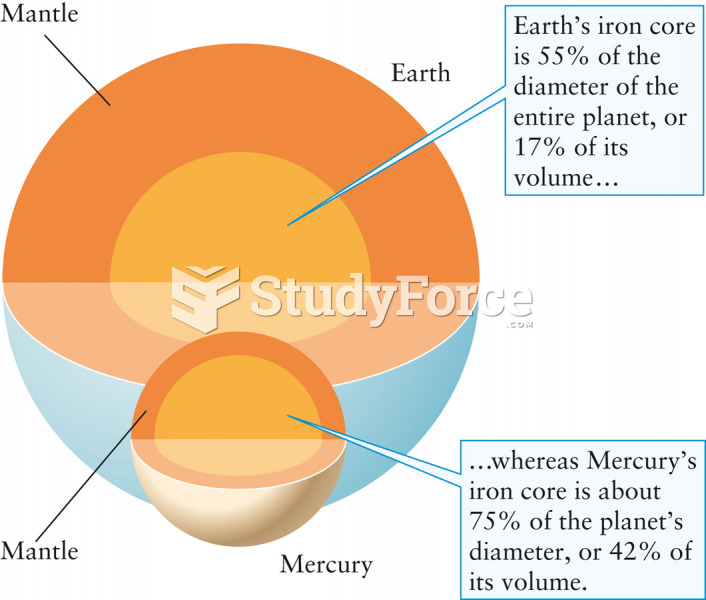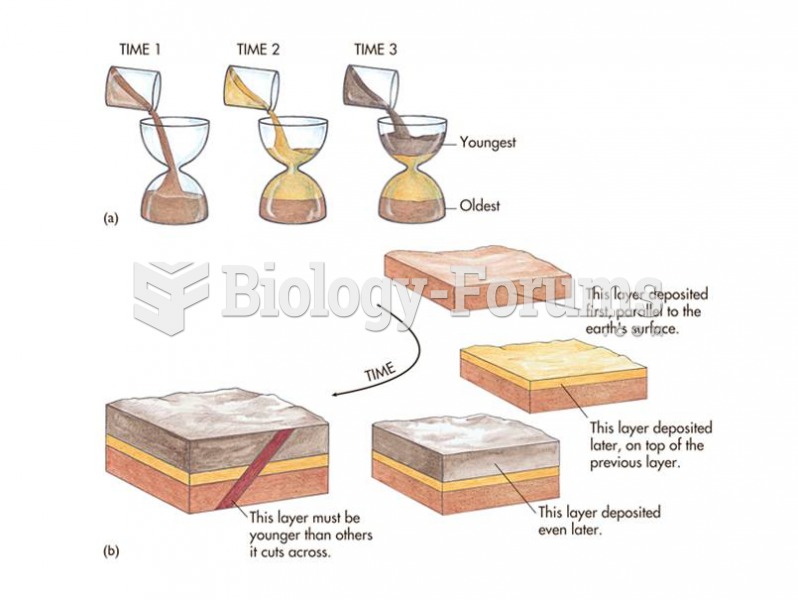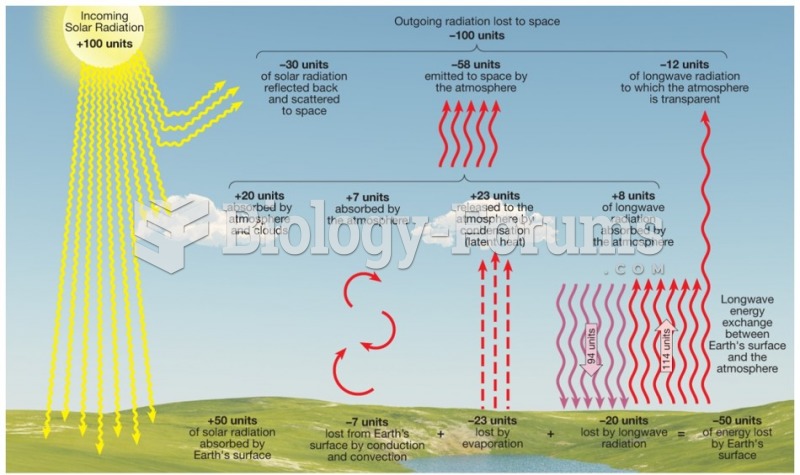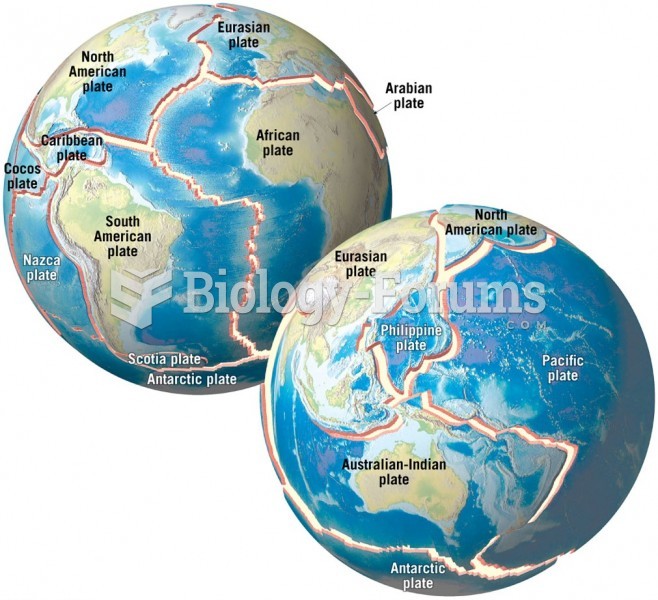If a person weighs 252 lb on Earth, what will the person weigh on the Moon?
a. 42 lb
b. 1512 lb
c. 252 lb
d. 126 lb
e. 25.2 lb
Question 2
The photoreceptors responsible for twilight vision are called
a. rods.
b. cylinders.
c. cones.
d. cans.
Question 3
When at rest, a spacecraft has the same height as length. When moving at relativistic speeds in the direction of its length, which one of the following describes its length and height to an observer at rest?
a. Its length is decreased and its height is increased.
b. Its length is decreased and its height is decreased.
c. Its length is decreased and its height is unchanged.
d. Its length is unchanged and its height is increased.
e. Its length is increased and its height is decreased.
Question 4
If a person weighs 150 lb on Earth, what will the person weigh on the Moon?
a. 25 lb
b. 900 lb
c. 150 lb
d. 75 lb
e. 300 lb
Question 5
The photoreceptors responsible for color vision are called
a. rods.
b. cylinders.
c. cones.
d. cans.
Question 6
Lydia proposes to send an interstellar probe off in stages. The first stage, traveling radially outward at 0.500 c relative to Earth, will send off a second stage traveling in the same direction as the first stage at a speed of 0.500 c relative to the first stage. Finally, the second stage will send off a third stage traveling in the same direction at 0.500 c relative to the second stage. Relative to Earth, the speed of the third stage will have a magnitude of
a. 0.500 c.
b. 0.800 c.
c. 0.929 c.
d. 0.972 c.
e. 1.500 c.
Question 7
A high tide is occurring at Charleston, South Carolina (80W, 33N). What two longitudes are experiencing low tide?
a. 10E and 170E
b. 10W and 170W
c. 10E and 170W
d. 10W and 170E
Question 8
For normal vision, an object can be seen clearly when it is beyond the
a. far point.
b. nearsighted point.
c. farsighted point.
d. near point.
Question 9
Captain Ray, on the Galactic Explorer, sets off bright signal lights at the two ends of his spaceship so that they are seen as flashing simultaneously by General Kay, who is watch the ship go by. General Kay concludes that she was next to the midpoint of the ship at the instant when the lights flashed in her reference frame. This can only happen if Captain Ray, at the center of the Galactic Explorer,
a. sees the lights flash simultaneously in his coordinate system.
b. sees the bow (front) light flash before the aft (rear) light.
c. sees the aft (rear) light flash before the bow(front light.
d. can calculate that the light flashes reach General Kay so that the flash from the bow light reaches her before the flash from the aft light.
e. can calculate that the light flashes reach General Kay so that the flash from the aft light reaches her before the flash from the bow light.
Question 10
A high tide is occurring at Charleston, South Carolina (36W, 59N). Which listed longitude is experiencing a low tide occurring?
a. 144E
b. 36E
c. 54E
d. 54W
e. 144W
Question 11
A visual defect wherein a person can see nearby objects clearly but not distant objects is called
a. dispersion.
b. destructive interference.
c. farsightedness.
d. nearsightedness.
Question 12
Clovis wants to lose weight. Clotilde tells him that he will be thin enough for her if he travels past her at 0.600 c. If the distance she sees from the front of his stomach to his back is then 24.0 cm, what distance in cm does she see when he is standing still?
a. 15.4
b. 19.2
c. 24.0
d. 30.0
e. 37.5
Question 13
A high tide is occurring at Charleston, South Carolina (45W, 64N). Which listed longitude is experiencing a low tide occurring?
a. 135E
b. 65E
c. 45E
d. 45W
e. 145W
Question 14
A visual defect wherein a person can see distant objects clearly but not nearby objects is called
a. dispersion.
b. destructive interference.
c. farsightedness.
d. nearsightedness.
Question 15
Two spaceships traveling in opposite directions along parallel lines measure their own and the other spaceship's length while passing one another. The crew on spaceship A says that their ship is 1000 m long and that ship B is 800 m long. The crew on ship B says that their ship is 1000 m long and that ship A is 800 m long. At what speed does each crew say that the other ship is traveling relative to their own ship?
a. 0.36 c
b. 0.60 c
c. 0.64 c
d. 0.80 c
e. 1.25 c
Question 16
A high tide is occurring at Charleston, South Carolina (70W, 12N). At approximately what other longitude is a high tide occurring?
a. 110E
b. 70E
c. 20E
d. 20W
e. 110W
Question 17
The image of a real object formed by a single converging lens cannot be
a. real, inverted, and enlarged.
b. real, inverted, and the same size as the object.
c. virtual, upright, and enlarged.
d. real, inverted, and reduced.
e. virtual, upright, and reduced.
Question 18
The 500 m-long spaceship Springbrake is at rest on the planet Hitest for refueling. Another spaceship, Summerbrake, passes parallel to Springbrake at 0.600c. The crew on Springbrake measure the length of Summerbrake as it passes and find that the length they measure is exactly the same as the known 500 m rest length of Springbrake. If Summerbrake were at rest next to Springbrake, its length would then be measured to be
a. 180 m.
b. 320 m.
c. 500 m.
d. 625 m.
e. 781 m.
Question 19
A high tide is occurring at Charleston, South Carolina (151W, 36N). At approximately what other longitude is a high tide occurring?
a. 29E
b. 151E
c. 61E
d. 61W
e. 29W
Question 20
A diverging lens produces an image of a real object. This image is
a. reduced, upright, and virtual.
b. enlarged, inverted, and real.
c. reduced, inverted, and virtual.
d. enlarged, upright, and real.
e. enlarged, upright, and virtual.
Question 21
A spaceship leaves Earth and maintains a constant force by means of a nuclear engine. As the speed of the spaceship increases, an observer on Earth finds that relative to her the magnitude of the spaceship's acceleration is
a. 0.
b. decreasing.
c. constant.
d. increasing.
e. proportional to the kinetic energy of the spaceship.
Question 22
A high tide is occurring at Charleston, South Carolina (80W, 33N). At approximately what other longitude is a high tide occurring?
a. 100E
b. 80E
c. 60E
d. 40E
e. 20E
Question 23
The image formed by a diverging spherical lens is always
a. upright.
b. reduced.
c. virtual.
d. all of these.
Question 24
Captain Jirk reports to headquarters that he left the planet Senesca 1.88 104 seconds earlier. Headquarters sends back the message: Was that spaceship proper time? It will be spaceship proper time if it was
a. measured by one clock fixed at one spot on Senesca.
b. measured by one clock fixed at one spot on the spaceship.
c. measured by a clock on Senesca at departure and by a clock on the spaceship when reporting.
d. measured by a clock on the spaceship when departing and by a clock on Senesca when reporting.
e. calculated by dividing the distance from Senesca according to Senesca by the speed of the spaceship.
Question 25
It is 12:00 noon local solar time at 75W. The date is March 21 . At which of the following longitudes would an observer be able to see the last-quarter moon rising?
a. 105W
b. 75E
c. 15W
d. 105E
Question 26
A(n) ______________ image is defined as one that cannot be brought to a focus on a screen.
a. virtual
b. real
c. upright
d. inverted
Question 27
The speed of FM waves will be observed to be c = 2.9979 108 m/s when the antenna emitting the waves is
a. at rest relative to the receiving antenna.
b. moving to the right of the detecting antenna at 0.5 c.
c. moving to the left of the detecting antenna at 0.5 c.
d. moving as described in (a), (b) or (c) above.
e. moving at 2.9979 108 m/s.
Question 28
At what longitude is an observer who sees the last-quarter moon on his meridian when it is 12:00 noon local solar time at 75W?
a. 165W
b. 15E
c. 15W
d. 165E
e. 75E
Question 29
A(n) ______________ image is defined as one that can be brought to a focus on a screen.
a. virtual
b. real
c. upright
d. inverted
Question 30
Fireworks go off at the same time according to Earth clocks in two cities, Alum and Boron, that are 300 km apart. The people in a spaceship that is flying in a straight line from Alum to Boron at 0.80 c also observe the fireworks. Do they see the fireworks in the two cities simultaneously? If the people in the spaceship say the fireworks were not simultaneous in Alum and Boron, how long before or after the fireworks flashed at Alum did the fireworks flash at Boron according to their calculations? (The spaceship is directly over Alum when the fireworks flash.)
a. Yes; 0
b. Before; 1.0 103 s
c. After; 1.0 103 s
d. Before; 1.3 103 s
e. After; 1.3 103 s
Question 31
The local solar time at 75W is 12:00 noon. What is the longitude of an observer who sees the full moon on her meridian at this time?
a. 105E
b. 75E
c. 15E
d. 15W
e. None of the above
Question 32
The image of a convex mirror is always
a. virtual, inverted, and larger.
b. virtual, upright, and smaller.
c. real, upright, and smaller.
d. real, inverted, and larger.
Question 33
A spaceship from another galaxy passes over the solar system directly above a radial line from the sun to the Earth. (We measure that distance to be 1.5 1011 m.) On Earth, the spaceship is observed to be traveling at a speed of 0.80 c, for which = 5/3 . As measured on Earth it takes the spaceship 625 seconds to travel from the sun to Earth. When a scientist in the spaceship measures the Earth-sun distance and the time it takes her to travel that distance, she finds the results are respectively
a. 9.0 1010 m; 375 s.
b. 9.0 1010 m; 625 s.
c. 1.5 1011 m; 625 s.
d. 2.5 1011 m; 625 s.
e. 2.5 1011 m; 1042 s.
Question 34
The local solar time at 135W is 12:00 noon. What is the longitude of an observer who sees the full moon on her meridian at this time?
a. 45E
b. 45E
c. 135E
d. 135W
e. None of the above
Question 35
The image of an object at the focal point of a concave spherical mirror
a. looks the same as the object.
b. is said to be formed at infinity.
c. is real.
d. is reduced.
Question 36
A proton has a total energy of 2.5 1010 J. How fast is it moving? (M = 1.67 1027 kg)
a. 0.90 c
b. 0.80 c
c. 0.70 c
d. 0.60 c
e. 0.40 c
Question 37
The particles of interplanetary dust are called ______________.
a. micrometeoroids
b. asteroids
c. meteors
d. meteorites
Question 38
Images of objects are formed by lenses because of
a. refraction.
b. diffraction.
c. internal reflection.
d. all of these.
Question 39
Assume a gram of a substance marketed as Pure Energy is annihilated by a gram of a second substance Anti-Pure Energy. How long would the energy released power a city which uses 109 watts of power?
a. 40 hrs
b. 25 hrs
c. 50 hrs
d. 65 hrs
e. 50000 hrs
Question 40
Short-period comets, such as Halley's comet, are believed to come from ______________.
a. the Kuiper Belt
b. the Oort cloud
c. the asteroid belt
d. Earth
Question 41
A lens that is thicker at the edge than at the center is
a. a diverging lens only.
b. a convex lens only.
c. a converging lens only.
d. both a convex lens and a converging lens.
Question 42
Energy is released during a nuclear reaction due to a conversion between mass and energy. Mass is not conserved. The initial and final amounts are different. If a total of 1.0 gram of mass is missing, how much energy has been released?
a. 9.0 1011 J
b. 9.0 1017 J
c. 9.0 1015 J
d. 9.0 1013 J
e. 9.0 1016 J
Question 43
Long-period comets are believed to come from ______________.
a. the Oort cloud
b. interstellar space
c. the asteroid belt
d. the Great Red Spot
Question 44
A lens that is thicker at the center than at the edge is
a. a diverging lens only.
b. a convex lens only.
c. a converging lens only.
d. both a convex lens and a converging lens.
Question 45
A proton's rest mass is 1.67 1027 kg. Calculate its kinetic energy when it is accelerated to a speed of 0.80 c.
a. 1.0 1010 J
b. 1.5 1010 J
c. 2.0 1010 J
d. 2.5 1010 J
e. 7.5 1010 J
Question 46
As comets approach and move around the Sun, the coma and the tail ______________ in size.
a. decrease
b. increase
c. remain the same
d. none of the above
Question 47
An object is placed at the center of curvature of a concave mirror. The image is
a. inverted, real, and the same size as the object.
b. virtual and the same size as the object.
c. virtual and smaller than the object.
d. virtual and enlarged.
e. erect, real, and the same size as the object.
Question 48
A proton's rest mass is 1.67 1027 kg. Calculate its total energy when it is accelerated to a speed of 0.80 c.
a. 1.5 1010 J
b. 1.0 1010 J
c. 2.5 1010 J
d. 2.0 1010 J
e. 7.5 1010 J
Question 49
Halley's Comet returns about every ______________ years.
a. 4
b. 12
c. 1000
d. 10,000
e. 76
Question 50
All real images
a. cannot be focused on a screen.
b. are erect.
c. can be focused on a screen.
d. are inverted.
Question 51
An electron (m = 9.1 1031 kg) has a speed of 0.90 c. What is the difference between its relativistic momentum and its non-relativistic momentum (in kg m/s)?
a. 4.3 1022
b. 3.2 1022
c. 5.4 1022
d. 6.5 1022
e. 2.5 1022
Question 52
Probably the best-known comet is ______________ Comet.
a. Sally's
b. Bally's
c. Bailey's
d. Malley's
e. Halley's
Question 53
A concave mirror will produce
a. only inverted images.
b. real or virtual images.
c. only virtual images.
d. only real images.
Question 54
An electron has a kinetic energy that is twice its rest energy. Determine its speed.
a. 0.76 c
b. 0.81 c
c. 0.94 c
d. 0.54 c
e. 0.87 c
Question 55
Comets are composed of ______________.
a. dust and ice
b. rock
c. helium
d. lead
e. iron
Question 56
An example of a converging spherical mirror is a
a. flashlight reflector.
b. bathroom mirror.
c. spherical truck mirror.
d. hubcap.
Question 57
An electron (m = 9.11 1031 kg) has a speed of 0.50 c. Determine the difference between its relativistic kinetic energy and the kinetic energy calculated without considering relativity.
a. 3.0 1015 J
b. 2.0 1015 J
c. 1.5 1015 J
d. 2.4 1015 J
e. 1.8 1015 J
Question 58
The ______________ surrounds the nucleus of a comet.
a. head or coma
b. cloud
c. fuzz
d. cover
e. epinucleus
Question 59
An example of a diverging spherical mirror is
a. a bathroom mirror.
b. a round Christmas tree ornament.
c. a flashlight reflector.
d. none of these.
Question 60
An astronaut traveling with a speed v = 0.90 c holds a meterstick in his hand. If he measures its length, he will obtain a value of
a. 1.0 m
b. 2.3 m
c. 0.19 m
d. 0.43 m
e. 0.81 m
Question 61
A meteor ______________ results when a large number of meteoroids enter Earth's atmosphere.
a. fall
b. landing
c. group
d. explosion
e. shower
Question 62
An object is placed 5 cm to the left of a converging spherical lens. The lens has a focal length of f = 10 cm. What kind of image is formed and what is its orientation?
a. Real/Upright
b. Virtual/Upright
c. Virtual/Inverted
d. Real/Inverted
Question 63
A starship navigator measures the distance between the Earth and the sun. If the ship is moving at a speed of 0.90 c, instead of obtaining 93 million miles, the navigator measures a distance (in millions of miles) of
a. 41.
b. 30.
c. 80.
d. 215.
e. 90.
Question 64
The seriousness of an asteroid collision is gauged by the ______________ scale.
a. Torino
b. Richter
c. Decibel
d. Sunami
e. Star
Question 65
An object is placed 5 cm to the left of a converging spherical lens. The lens has a focal length of f = 15 cm. Where is the image formed and what kind of image is formed?
a. 7.5 cm to the right of the lens, Real
b. 7.5 cm to the left of the lens, Virtual
c. 7.5 cm to the right of the lens, Virtual
d. 7.5 cm to the left of the lens, Real
Question 66
A meterstick is shot from a meterstick projector at a speed of 0.90 c. How long will it be relative to an observer's frame of reference?
a. 2.3 m
b. 0.91 m
c. 1.0 m
d. 0.44 m
e. 0.81 m
Question 67
When a meteor strikes Earth's surface, it is called a(n) ______________.
a. asteroid
b. star
c. planet
d. meteorite
e. ball
Question 68
An object is placed 10 cm to the left of a converging spherical lens. The lens has a focal length of f = 5 cm. Where is the image formed?
a. 3.3 cm to the left of the lens
b. 3.3 cm to the right of the lens
c. 10 cm to the left of the lens
d. 10 cm to the right of the lens
Question 69
A jet plane travels around the world at 2 000 mi/hr (894 m/s). Two accurate atomic clocks measure the times of flight, one on board the plane and the second on Earth. If it takes 12 hours to complete the journey, what will the time difference (in s) be?
a. 0.75
b. 0.50
c. 0.25
d. 1.0
e. 0.19
Question 70
When a meteoroid enters Earth's atmosphere, it is called a(n) ______________.
a. meteor or shooting star
b. asteroid
c. star
d. planet
e. dwarf planet
Question 71
The least diffraction occurs for
a. < d.
b. = d.
c. > d.
d. none of these; that is, it makes no difference.
Question 72
A 30-year-old woman takes a trip on a rocket, leaving her 20-year-old brother behind. She travels at a speed of 0.8 c, and is gone 20 years, according to the younger brother. When she returns, how many years older/younger is she than her brother?
a. 2 years younger
b. 2 years older
c. 3 years older
d. 10 years older
e. 8 years older
Question 73
______________ is the largest known asteroid.
a. Pluto
b. Mars
c. Ceres
d. Vesta
e. Mercury
Question 74
The greatest diffraction occurs for
a. < d.
b. = d.
c. > d.
d. none of these; that is, it makes no difference.
Question 75
A spaceship moving past the Earth with a speed of 0.800 c signals to the Earth with pulsed laser photons emitted at 10.0-second intervals according to the spaceship's clock. According to observers on Earth who see the flashes, the time interval they measure is
a. 13.4 s
b. 16.7 s
c. 12.5 s
d. 9.70 s
e. 6.03 s
Question 76
Charon is a moon of ______________ .
a. Earth
b. Venus
c. Neptune
d. Mars
e. Pluto
Question 77
The change in the direction of a wave resulting from its encountering a small slit is known as
a. interference.
b. diffraction.
c. reflection.
d. polarization.
Question 78
The half-life of a muon is 2.2 s. How fast is it moving relative to an observer who says its half-life is 4.4 s?
a. 0.87 c
b. 0.75 c
c. 0.97 c
d. 0.72 c
e. 0.50 c
Question 79
Nix and Hydra are moons of ______________ .
a. Earth
b. Venus
c. Neptune
d. Mars
e. Pluto
Question 80
The bending of light rays around corners is called
a. reflection.
b. refraction.
c. interference.
d. diffraction.
Question 81
The half-life of a muon is 2.20 s as measured in a stationary reference frame. What is the half life of the muon (in s) when it is moving with a speed of v = 0.800 c?
a. 8.13
b. 2.75
c. 3.67
d. 15.8
e. 1.32
Question 82
______________ is the only moon in the solar system to have retrograde motion.
a. Ganymede
b. Europa
c. Callisto
d. Titan
e. Triton
Question 83
Light for which the electric field vector is restricted to one plane is said to be
a. linearly polarized.
b. linearly refracted.
c. linearly reflected.
d. unpolarized.
Question 84
Two fireworks explode at the same position on the 4th of July. A stationary observer notices that the time interval between the two events was 5.00 seconds. A second observer flies past the fireworks at a speed of 0.600 c. What value does she obtain when she measures the time interval between the two explosions?
a. 8.33 s
b. 6.25 s
c. 4.00 s
d. 3.00 s
e. 5.00 s
Question 85
______________ is the major moon of Neptune.
a. Triton
b. Titan
c. Ganymede
d. Europa
e. Callisto
Question 86
A liquid crystal display (LCD) using a twisting effect in the display involves
a. polarization.
b. interference.
c. refraction.
d. diffraction.
Question 87
A fancy sports car moves past an observer on a corner at a speed of 0.600 c. When the observer indicates a one-second interval has passed, what time interval will be shown on the driver's watch?
a. 1.67 s
b. 0.800 s
c. 1.25 s
d. 0.600 s
e. 1.00 s
Question 88
The major moons of ______________ were named after literary characters.
a. Mars
b. Jupiter
c. Saturn
d. Uranus
e. Neptune
Question 89
Polarization involves
a. the orientation of field vectors.
b. only longitudinal waves.
c. diffraction.
d. interference.
Question 90
A fancy sports car passes Big Ben at a speed of 0.600 c. What time interval will the driver measure for a one-second interval on the large clock?
a. 1.67 s
b. 0.800 s
c. 1.25 s
d. 0.600 s
e. 1.00 s
Question 91
Saturn's moon named ______________ is the second largest moon in the solar system.
a. Titan
b. Europa
c. Ganymede
d. Phobos
e. Diamos
Question 92
The trapping of light in light pipes, or fiber optics, is due to
a. total internal reflection.
b. refraction.
c. absorption of the outside light.
d. diffraction.
Question 93
Boat 1 goes directly across a stream a distance L and back taking a time t1 . Boat 2 goes down stream a distance L and back taking a time t2 . If both boats had the same speed relative to the water, which of the following statements is true?
a. t2 > t1
b. t2 < t1
c. t2 = t1
d. t2 = 2t1
e. t2 = 0.5t1
Question 94
Suppose a small, new planet were discovered at a distance of 4 AU from the Sun. According to Kepler's third law, what would be its period?







